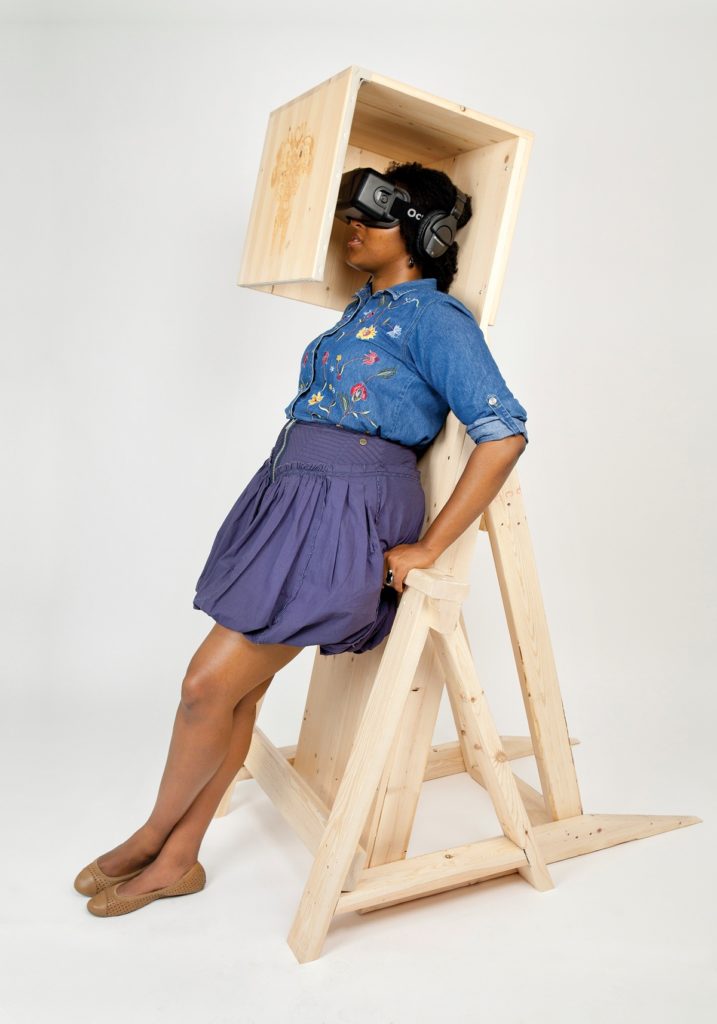In his study of Caribbean culture and carnival tradition, literary scholar Gerard Aching says the act of mask-wearing might be viewed not as processes that conceal identity, but rather those that reveal them.
Masking is central to the art practice of Montreal-based artist Olivia Mc Gilchrist. She was inspired by Jonkonnu, a festival derived from 18th-century slave celebration where performers wore masks in mimicry of the white plantation owners, in effect revealing their whiteness as a posture or construction.
Mc Gilchrist, who is of French and Jamaican heritage, performed as the character “Whitey,” wearing a chalky plaster mask in early photograph- and video-based work to explore the place of the white female body in the tropical space as well as the complex hybridity of Caribbean culture.
She’s now adopted a new mask—a virtual-reality headset—to deepen her study of post-colonial identity.
For Jonkonnu/Gens Inconnus (2014–15), viewers tuck their heads into a cube-shaped pine box—a sort of theatre for one—laser-etched with emancipation-era artist Isaac Mendes Belisario’s depictions of Jonkonnu performers. The confinement is intended to establish a theatricalized environment.
Once inside the box, viewers don an Oculus Rift headset and watch a virtual-reality film. In Kingston, Jamaica, Mc Gilchrist had a band of Jonkonnu performers film each other with a GoPro camera. The video blends multiple perspectives: that of spectator, and then by turning the mask inward, that of the performer.
“It breaks the anthropological gaze of ‘observing the funny ways of the Other,’” she says.
In another VR project, from many sides (2016), which is compatible with a Samsung Gear headset, Mc Gilchrist draws on imagery of water, submersion and the mythical character of the Riva Mumma, a Jamaican mermaid diety.
Above a shimmering, breathing seascape, the three portals suspended in the sky in from many sides alternate through several hundred still images of the character and her environs. Here, Mc Gilchrist references Barbadian writer Kamau Brathwaite’s “tidalectics,” considering the movement of the water in an almost cyclic motion as an alternative to Western linear narrative structure.
For its incredible transportive powers, VR has been called “the ultimate empathy machine”: an epithet maybe a little overstated, Mc Gilchrist says.
“The deconstruction and reconstruction of identities will be suggested but not consumed,” she’s written. It is, instead, a powerful tool for suggestion: “You can ask the user to consider that their opinion, their vision, their understanding of the world is not necessarily the only one.”
It is a mask with the unique ability perhaps to reveal other masks—the ones performed every day—that oftentimes go unnoticed.
This post is adapted from an article in the Winter 2017 issue of Canadian Art.









